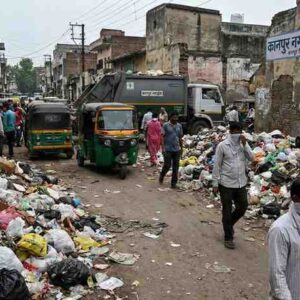Ideals vs. Reality: The Growing Gap Between What We Profess and What We Practice
In the vibrant mosaic of Indian society, where diverse religious and cultural beliefs form the bedrock of community life, a troubling discrepancy looms large: the gap between professed beliefs and actual practices. Despite India’s rich heritage of moral and ethical teachings across various religions, a significant disconnect persists, posing serious questions about the authenticity of societal values.
Key Metrics Highlighting the Dissonance
Recent government statistics and independent studies highlight this troubling gap:
- Religious Adherence vs. Ethical Practice: According to the Ministry of Culture, while over 80% of Indiansclaim adherence to religious teachings, issues like corruption and social discrimination persist at alarming rates.
- Caste Discrimination: The 2023 National Survey on Social Attitudes reveals that 40% of respondents admit to observing caste discrimination in their communities, despite the widespread religious and constitutional prohibition against such practices.
- Corruption Indices: A 2023 report by Transparency International ranks India 77th out of 180 countries in the Corruption Perceptions Index, indicating a significant discrepancy between ethical teachings against corruption and real-world practices.
Cultural and Social Pressures
The drive to conform to societal norms often leads individuals to engage in practices contrary to their personal beliefs. Family honor, deeply rooted in Indian culture, frequently pressures individuals to uphold traditional values publicly, even when they privately accept more progressive ideals. This pressure is particularly evident in the maintenance of caste-based hierarchies and arranged marriage practices, which continue despite modern opposition to such traditions.
The Influence of Economic and Social Media Pressures
Economic challenges also exacerbate ethical compromises. In the competitive Indian market, small-scale corruption is often rationalized as necessary for survival, starkly contrasting with the ethical teachings of Hinduism, Islam, Buddhism, and Christianity, which promote honesty and integrity.
Moreover, the rise of social media has created a dual life for many, where individuals project an image that aligns with accepted social norms rather than their true beliefs, further widening the gap between public persona and private beliefs.
Solutions and Reforms
Addressing this gap requires a multifaceted approach:
- Educational Reforms: Integrating ethics and morality into the education system could help align younger generations with the practice of their professed beliefs.
- Community Leadership: Religious and community leaders play a pivotal role in bridging this gap. By setting examples of integrity and accountability, they can inspire their followers to align their actions with their beliefs.
- Legal and Policy Reforms: Strengthening laws against corruption and discrimination, and ensuring their strict enforcement, could help reduce the practice of unethical behaviors that contradict religious and moral teachings.
Conclusion: A Call for Authenticity
As India positions itself on the global stage, the dissonance between belief and practice not only hampers its socio-economic development but also questions the integrity of its cultural identity. The path forward lies in fostering a culture of authenticity, where individuals are encouraged to align their actions with their values, supported by robust educational frameworks, community leadership, and stringent legal systems. Only through such comprehensive efforts can India hope to reduce the gap between the ideal and the real, ensuring that its cultural and religious beliefs are truly reflected in the daily lives of its people.
Disclaimer: All statistics are derived from government releases and credible institutions such as theMinistry of Culture,National Survey on Social Attitudes, andTransparency International.












